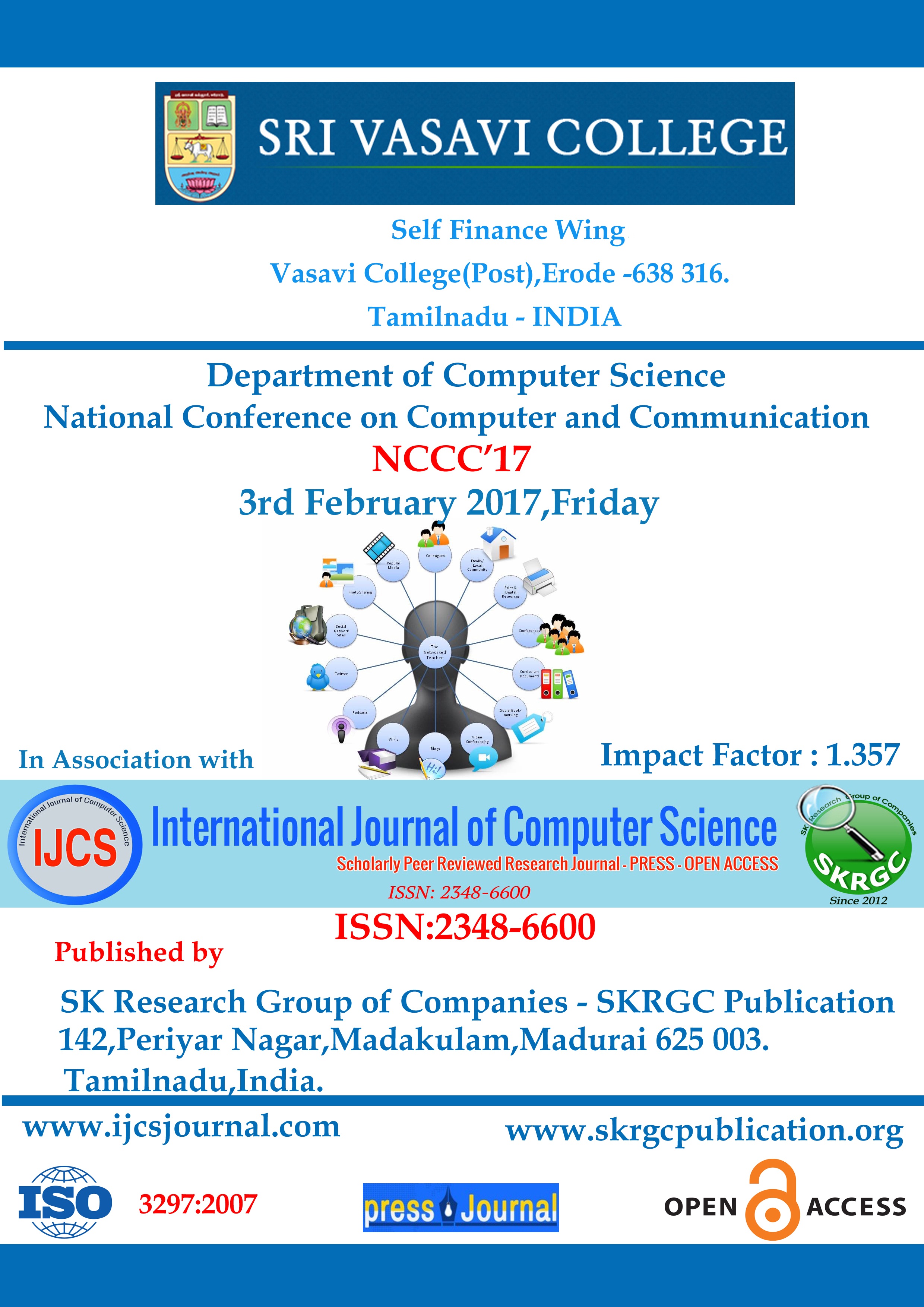OPTIMIZATION OF PAGE RANKING WITH SWARM INTELLIGENCE ALGORITHMS FOR RE-RANKING OF WEB SEARCH RESULTS
Sri Vasavi College, Erode Self-Finance Wing, 3rd February 2017. National Conference on Computer and Communication, NCCC’17. International Journal of Computer Science (IJCS) Published by SK Research Group of Companies (SKRGC)
Download this PDF format
Abstract
Search engines use the Page Ranking Algorithms to deliver the search results by taking the relevance, importance and content score into consideration. Web mining techniques are brought to use by the search engines for the extraction of relevant documents from the web database documents and supply the necessary and required information to the users. If the search results are not displayed according to the user’s interest then it will lead to the search engine losing its popularity. PageRank is the famous web page sorting algorithm used commonly by Google.com. The web page whose content is often updated by the owner with the most relevant data obviously gains the user casually getting attracted towards that web page. This makes the web page to get more interests than its competitors. On the other hand, this is not possible with Page Rank algorithm as the referential concept only provides the URL irrespective of the content. This paper optimizes the Page Rank Algorithm with Cuckoo Search Optimization Algorithm (OCSPRA) and compares with OptimizedBee Colony Page Ranking Algorithm (OBPRA)
References
[1] Page, L., Brin, S., Motwani, R., &Winograd, T. (1999). The PageRank citation ranking: bringing order to the web. Technical report, Stanford Digital Libraries SIDL-WP-1999-0120
[2] Ridings, C., & Shishigin, M. (2002). PageRank uncovered. Technical Paper for the Search Engine Optimization Online Community.
[3] Teodorovic, D., Lucic, P., Markovic, G., &Dell'Orco, M. (2006). Bee colony optimization: principles and applications. In 2006 8th Seminar on Neural Network Applications in Electrical Engineering (pp. 151-156). IEEE.
[4] Bonabeau, E., Dorigo, M., &Theraulaz, G. (1999). Swarm intelligence: from natural to artificial systems (No. 1). Oxford university press.
[5] Karaboga, D., &Akay, B. (2009). Artificial bee colony (ABC), harmony search and bees algorithms on numerical optimization. In Innovative production machines and systems virtual conference.
[6] Ashita, S. B. (2012) Artificial Bee Colony (ABC) Algorithm for Vehicle Routing Optimization Problem. International Journal of Soft Computing and Engineering (IJSCE), 2231-2307.
[7] Tereshko, V. (2000). Reaction-diffusion model of a honeybee colony’s foraging behaviour. In International Conference on Parallel Problem Solving from Nature (pp. 807-816). Springer Berlin Heidelberg.
[8] Tereshko, V., & Lee, T. (2002). How information-mapping patterns determine foraging behaviour of a honey bee colony. Open Systems & Information Dynamics, 9(02), 181-193.
[9] Shalya, N., Shukla, S., &Arora, D. (2012). An Effective Content Based Web Page Ranking Approach. International Journal of Engineering Science and Technology (IJEST), 4(08).
[10] Yang, X. S., & Deb, S. (2009). Cuckoo search via Lévy flights. In Nature & Biologically Inspired Computing, 2009. NaBIC 2009. World Congress on (pp. 210-214). IEEE
Keywords
Search Engine, Bee Colony, Cuckoo Search, Optimization.

